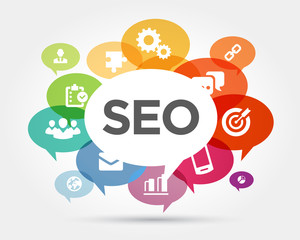Ceiling Repairs Perth are an important part of home maintenance. It is crucial to address damage to the ceiling as soon as possible to avoid further problems and costlier repairs.

Cracks and holes can be filled with plaster mixed with joint compound to create a smooth surface. Once the plaster is smoothed, it is primed and painted to provide a polished restoration look.
If a crack is in the middle of a room, or it runs a length of the ceiling, this can be a sign of structural damage. In these cases, you should consult a professional for an assessment and repairs. This is particularly important if the crack seems to be a result of water damage. It’s best to find the source of the water damage and fix it, even if this means that you need to remove portions of the ceiling.
In some cases, cracks in the ceiling can simply be caused by movement in a building’s foundation. This can put pressure on the drywall, which will cause it to crack. This type of cracking is fairly common in older buildings, and it is often not a cause for concern.
Cracks that extend down the wall, however, are more likely to be a sign of structural problems. These can be the result of uneven foundation settlement, and they can have a serious effect on the stability of your home. This type of cracking can also be the result of a leaking roof or improper construction.
If you are going to attempt to repair these types of cracks in your ceiling, it’s best to work from the attic if possible. This will keep you from having to deal with mud and other debris falling down on your furniture or flooring. If you are unable to access the attic, it’s a good idea to lay down a sheet of plastic or a drop cloth in the room below the damaged area to catch the mud and other debris. You should also make sure that you have a sturdy ladder to reach the ceiling.
Start by removing any paint or plaster buildup in the crack that you are trying to repair. Then use a drywall compound to fill the cracks. This can be done using a brush, or you can use a trowel to create a smooth surface. Once the drywall compound is dry, it can be sanded down to create a smooth finish. Once the sanding is complete, you can apply a new coat of paint to match the existing color.
Water Damage
Water damage to ceilings can be one of the most serious issues that homeowners face. It can cause extensive structural damage, and lead to a wide range of health problems, including mold and bacteria growth. In many cases, water damage can also be very difficult to repair. However, with the right knowledge and professional help, it is possible to restore water-damaged ceilings to their original condition.
The first step in repairing water-damaged ceilings is to identify and contain the source of the leak. This can be done by placing buckets and containers under leaking areas, covering furniture to prevent wet spots, and opening up windows and doors to allow the space to dry out. Professional plumbers can also be brought in to trace the source of the leak and fix it, if needed.
Once the source of the leak has been addressed, the next step is to prepare the damaged area for repair. This may include removing any cracked plaster or paint and sanding down the surface to create a smooth, even finish. It is also a good idea to install a dehumidifier or place fans in the room to speed up the process of drying the ceiling.
After the affected area has been prepared, joint compound or Spackle can be used to patch up any damaged areas of the ceiling. It is important to use a high-quality product, as this will ensure that the patching and painting work lasts as long as possible. If the ceiling is being repainted, it is also a good idea to use a stain-blocking primer, as this will help to prevent future water stains from bleeding through the new paint.
Once the affected areas have been repaired, it is a good idea to clean the area to remove any dust and debris that has accumulated. Then, the ceiling can be painted with a suitable exterior or interior paint. It is important to select a paint that is compatible with the material of your ceiling, for example, plaster versus drywall. Finally, it is a good idea to seal the newly painted area with a gloss glaze to protect the paint and keep it looking shiny for longer.
Sagging
Sagging ceilings are a common issue in Australian homes, and one that needs to be addressed quickly to avoid structural damage. Sagging ceilings can be caused by a variety of issues, including water damage or faulty construction. The best way to determine the cause is by having a building inspector visit your home. They can identify any serious issues and recommend the best course of action for repairs.
If the sagging is due to water damage, they will recommend that you turn off any electricity in the affected area before starting work. This step is necessary to prevent shocks and will ensure your safety during the repair process. In addition, you should remove any contaminated materials to avoid further damage to your home’s structure.
If your sagging is caused by faulty construction, they may recommend that you replace the entire ceiling or sections of it. This will ensure that your home is safe and secure and will not fall down in the future.
Other causes of sagging include old plaster that has become brittle, or by water damage or termite problems. These types of issues are much more difficult to fix and will require professional help from a licensed contractor.
In some cases, sagging ceilings can be fixed by simply restrapping the ceiling sheets. This will ensure that the sheets are securely attached to the timber framing. However, in some cases, you will need to replaster the whole ceiling to ensure that it is strong and stable.
The best way to know if your home’s ceilings are in need of restrapping is to have a professional inspect it. They can spot the problem and provide a fast and effective solution.
As a general rule, you should have your ceilings checked by a professional every 10 years to make sure that they are in good condition. A professional can detect small problems before they cause major issues, which will save you time and money. They can also advise on the best paint and finish for your ceilings, and ensure that it is resistant to mould and mildew.
Paint Damage
When a ceiling gets painted too soon, or is damaged during the painting process, it creates a vulnerable area that can lead to water damage or insect invasion. A professional can help make sure the ceiling is repaired properly to prevent additional problems.
When you’re ready to repair a ceiling with paint damage, remove any furniture or wall hangings from the room and lay down a drop cloth to protect your furnishings. Make sure you have your gloves and goggles handy as well to protect yourself from falling debris and splatters. It’s also a good idea to turn off the electricity in the room.
Start by examining the ceiling for the cause of the damage. If the ceiling is stained, apply a stain-blocking primer to stop stains from bleeding through. Then repaint the ceiling using a color that matches the rest of the room. It’s also a good idea that you use the same type of paint to ensure the repaired areas match up evenly.
If you have small cracks or nail pops in your ceiling, they can be easily fixed by applying a thin layer of joint compound to the damaged area. Once the compound dries, sand it smooth to prevent further damage. For more extensive or serious damage, a drywall expert can help you replace sections of the ceiling and address underlying structural issues.
Structural problems like large holes, sagging or loose ceilings, or peeling paint often require more intensive repair. These problems may need to be replaced entirely and require the expertise of a drywall specialist. These professionals can assess your home or business to determine if the problem is caused by age or other factors and will be able to recommend repairs that are safe and long-lasting. They can also help you decide if replacing the ceiling is the best option for your space. In some cases, a replacement may be less expensive than repairing existing problems. In addition, they can save you the time and hassle of doing it yourself.


